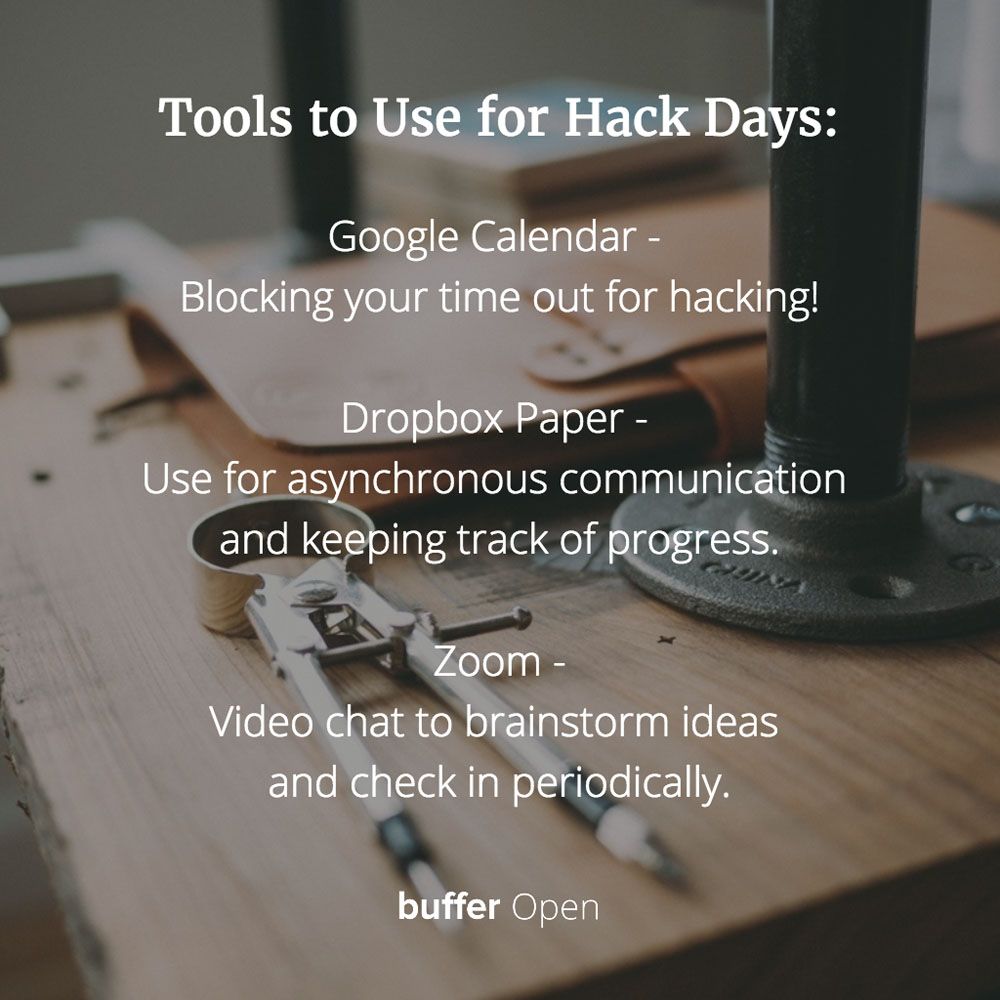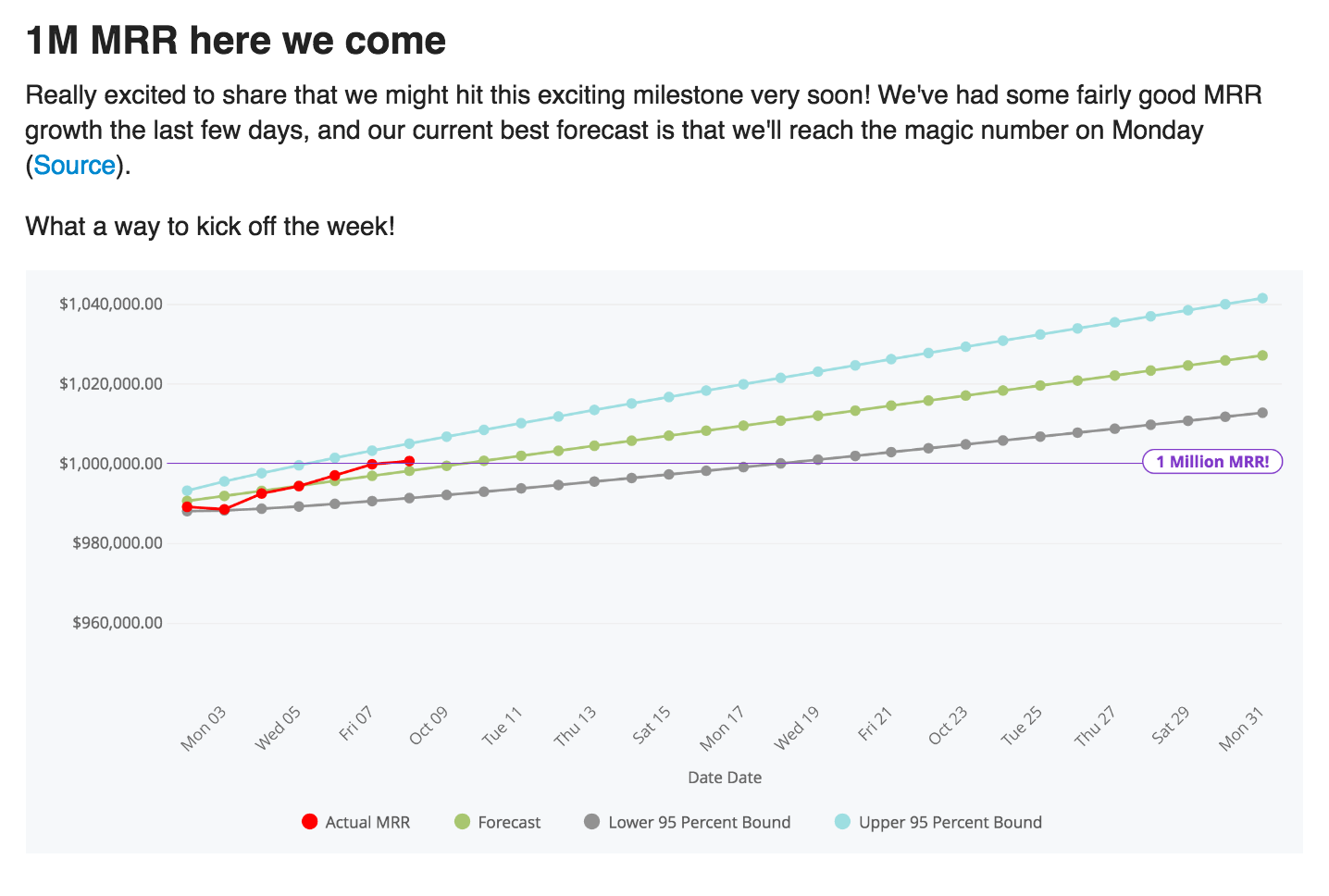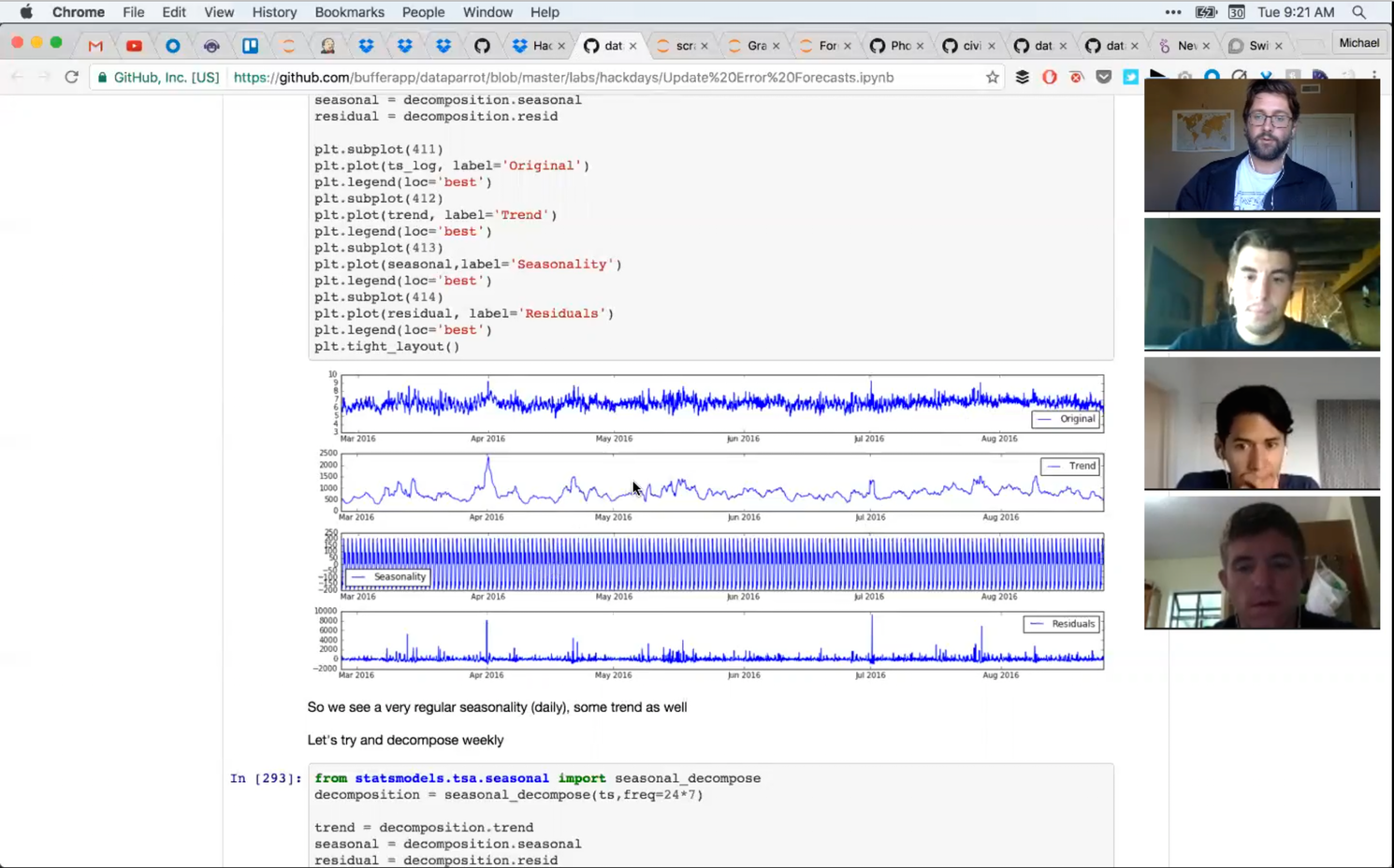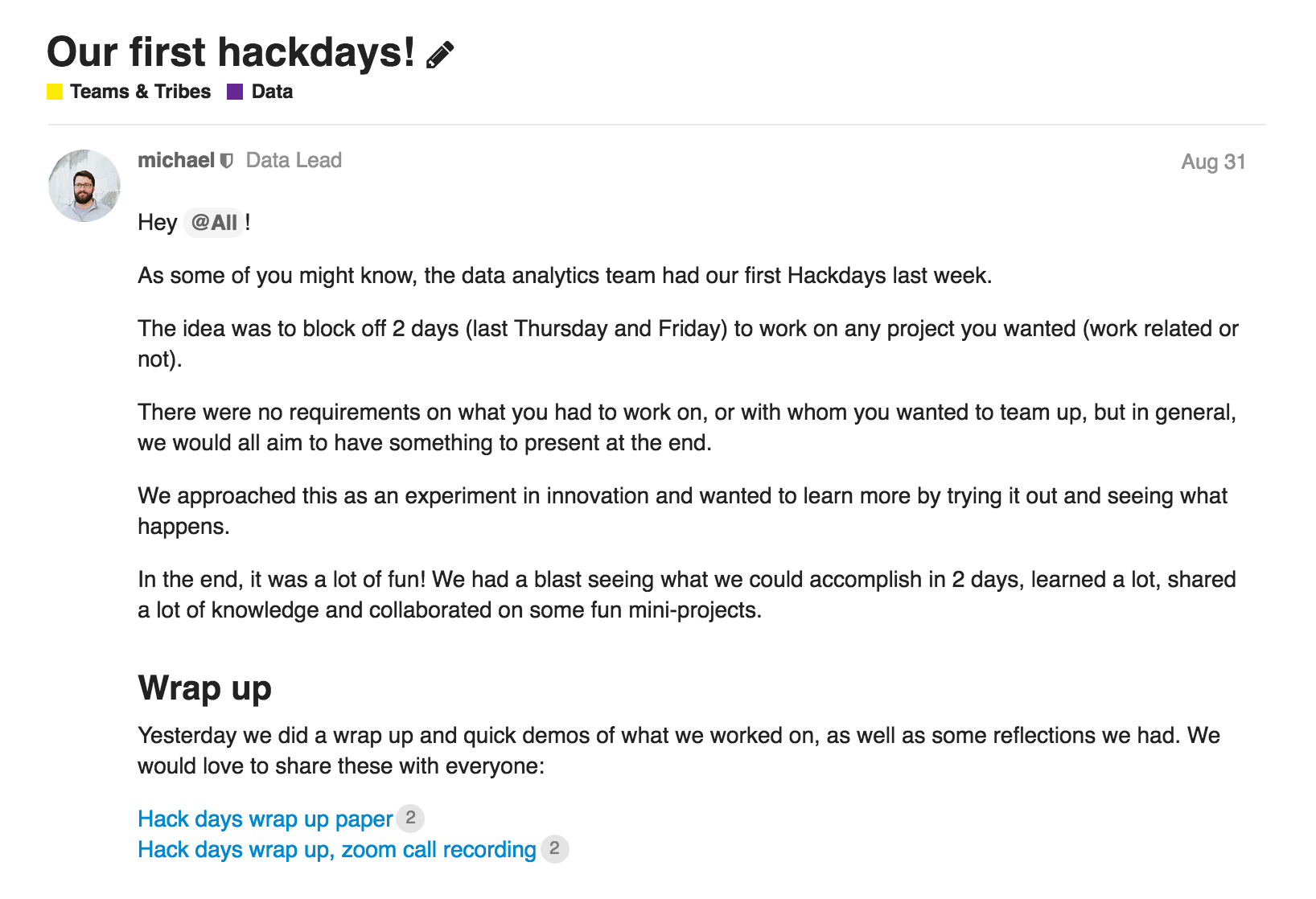
Buffer Hack Days: Our Intense Experiment for a Creative Jolt
Director of People @ Buffer
Do you remember the last time you focused solely on one project — a big personal or work-related task — until it was finished?
Recently, our data team tried this with a stretch of two full work days they called “hack days.” Four projects came about as a result, as well as a host of other benefits for the data team (and entire company!)
Read on to learn more about the experiment, the process and how you could try an event like this for your business or team.
In need of focus time, an idea
A hack day, or hackathon, is a sprint-like event in which a team comes together to collaborate intensively for a short amount of time (usually a day or a few days).
Our data team lead, Michael, had participated in hack days at a previous job and found them a hugely beneficial experience.
After reflecting on the Buffer data team’s objectives and key results, Michael observed that a lot of their projects were reactive, driven by external needs. And yet there were some ideas they wanted to explore that would have more long-term effects, if only they could find the time.
Matt, for example, wanted to explore the idea of a customer health metric. Julian wanted to work on a financial forecasting model for more accuracy in our business projections and budgeting.
What if they took two full, focused days to try to achieve these goals?
The case for intense focus time
There are lots of really great statistics on the benefits of single-tasking vs multitasking.
There are also studies that show using timers can help increase your productivity. (The Pomodoro Technique is a big movement here!)
The hack days method essentially combines the two and helps remove outside distractions such as meetings.
Aside from the sheer productivity benefits, there comes a sense of deeper camaraderie and team-building.
“Hack days provide a real world scenario where you can bring different areas (and roles) of the business together to work collaboratively on something that will benefit the organization,” says Anthony Gerrits of Hack Days Australia.
Hack days can apply to all areas within a team – not just the engineers and analysts. Everyone can benefit from a clear goal and a specified deadline.
Create a “theme” around the hack days can be helpful for cross-team or within-team collaboration, such as:
- Open theme (anything you want to work on!)
- Charity or community focused
- Customer focused
Setting up the experiment
Taking time out of the team’s demanding list of to-dos was a bit of a risk. If it wasn’t successful, would they have an even harder time getting to those bigger projects in the future?
Still, the team was all on board when Michael proposed the idea.
They sent a Discourse announcement about their plan and checked in with all the teams they worked closely with to make sure this didn’t derail an other projects or progress.
Here were the parameters (which could be similar for in-person or remote teams):
- Block off your calendar: No meetings or syncs for the two pre-scheduled days.
- Check in as often as you need to with your teammates.
- Use a running Paper document to track ideas, bounce ideas off each other.
- Work on anything you feel called to do! There’s no justification or rationale needed.
- Aim to have something to present at the end

The tools the team used:
- Google Calendar – Blocking out their time is a huge help to signal to others that they were unavailable for those times. There is also a mental benefit to putting something on a calendar. It provides more accountability and structure.
- Dropbox Paper – This is a powerful tool for asynchronous communication and keeping track of progress.
- Zoom – Meeting periodically can help to check in, bounce ideas around and encourage one another.

That’s it! Michael said he was wary of putting too much structure around the hack days event but rather wanted to give it freedom to evolve naturally.
While the goal was to work their typical workdays, some put in a few extra hours (or more!) simply because they were so excited about their projects.
“I think I ended up going to bed around 1 or 2 a.m. on that first day,” Michael said. “I had a quick sync with David and Julian before that, and David was just starting his day in Grenada. Mostly I just had a lot of fun working on the project, which is why I put in the crazy hours.”
What came out of our first hack days?
So how was the experiment? Nearly every team member said, “It was awesome. Can’t wait to do it again.”
The team accomplished a lot in those two days, and learned a lot too about what they’d do differently to better optimize that time.
All of these projects were “done” within those two days, or as, Michael said, “done to a certain level of ‘doneness.’” Nearly all of them are in use currently at Buffer or available on Github for use!
- Julian built a model to calculate accurate monthly recurring revenue forecasts. (We just used the model to predict when we would hit $1 million dollars in MRR and it was only off by 2 days!)

- David built a useful open source library that can make it easier to deploy machine learning and data processing models.
- Matt researched a ‘customer health score’ that would define a healthy Buffer customer using frequency of usage data.
- Michael spent his time trying out approaches to detect when Buffer has ‘spikes’ in update errors by looking at historic data over the last 6 months. Using this model, we could detect anomalies and update the team faster.

David shared, “I never though that we could do so much work in only 2 days and have this much of fun when developing and sharing updates.”
The main goal was fostering creativity across a remote team, which felt completely validated and would work for individual projects as well, not just individual tasks.
The future of hack days at Buffer
Michael shared this note with the whole Buffer afterwards:

He also shared some reflections on the hack days experiment:
- It was cool to see how a hackathon could work in a distributed team
- Even though we have the freedom to work anything you like, it’s OK to work on ‘normal’ work as well, if you still feel drawn to it. In that way, hack days gives you block of time where you get to focus on any outstanding work you wanted to tie up, without any interruptions.
- We managed to accomplish a lot in 2 days, but feel that we could be even more prepared next time around and more disciplined about clearing calendar and blocking of time.
Michael said they are planning two hack days in Q4. “There is definitely a sense of sparking innovation and creativity that will roll over into our day-to-day work”
For this next round, Michael plans to personally narrow in on which projects he wants to tackle and research those in more detail so that he can better utilize the stretches of work time.
This could also be a powerful model for while the Buffer team is at our in-person retreats to dive deep on a particular set of projects or goals — even across teams.
And there’s a chance hack days could spread beyond the data team, too. Sunil, our Chief Technical Officer, is interested in trying a similar experiment with the engineering team.
“There was an awesome energy and camaraderie that felt really good,” Michael said. “We were all amazed by how much we could accomplish in a short period of time.”
Over to you
Have you attempted a hack-a-thon, write-a-thon or any sort of -a-thon? ? What sort of projects would you love to spend a few days really diving into? We’d love to hear your thoughts in the comments!
Try Buffer for free
140,000+ small businesses like yours use Buffer to build their brand on social media every month
Get started nowRelated Articles

TikTok's parent company must divest the app or face a ban in the U.S. Here's everything we know, plus how to plan ahead.

How the Buffer Customer Advocacy Team set up their book club, plus their key takeaways from their first read: Unreasonable Hospitality by Will Guidara.

In this article, the Buffer Content team shares exactly how and where we use AI in our work.